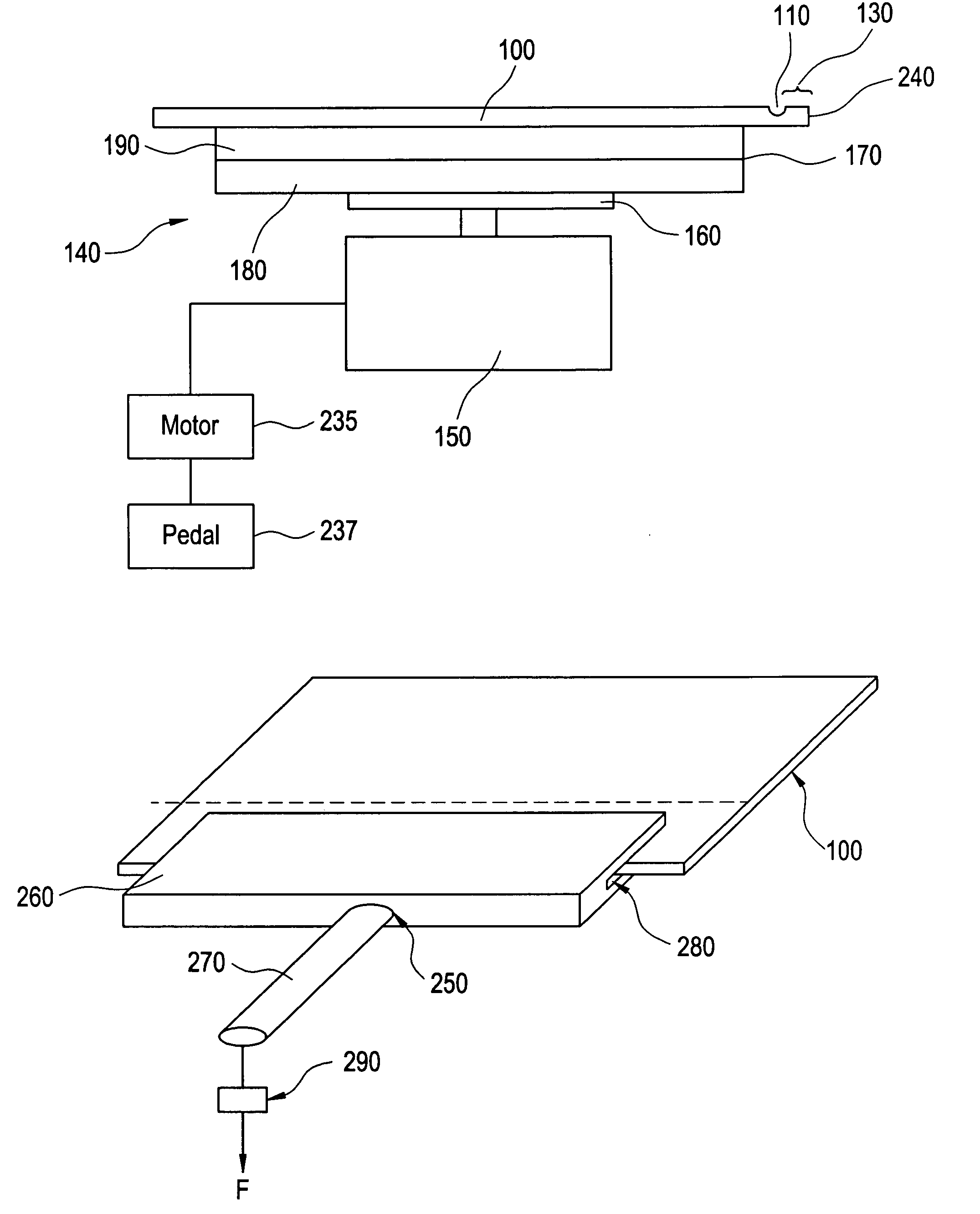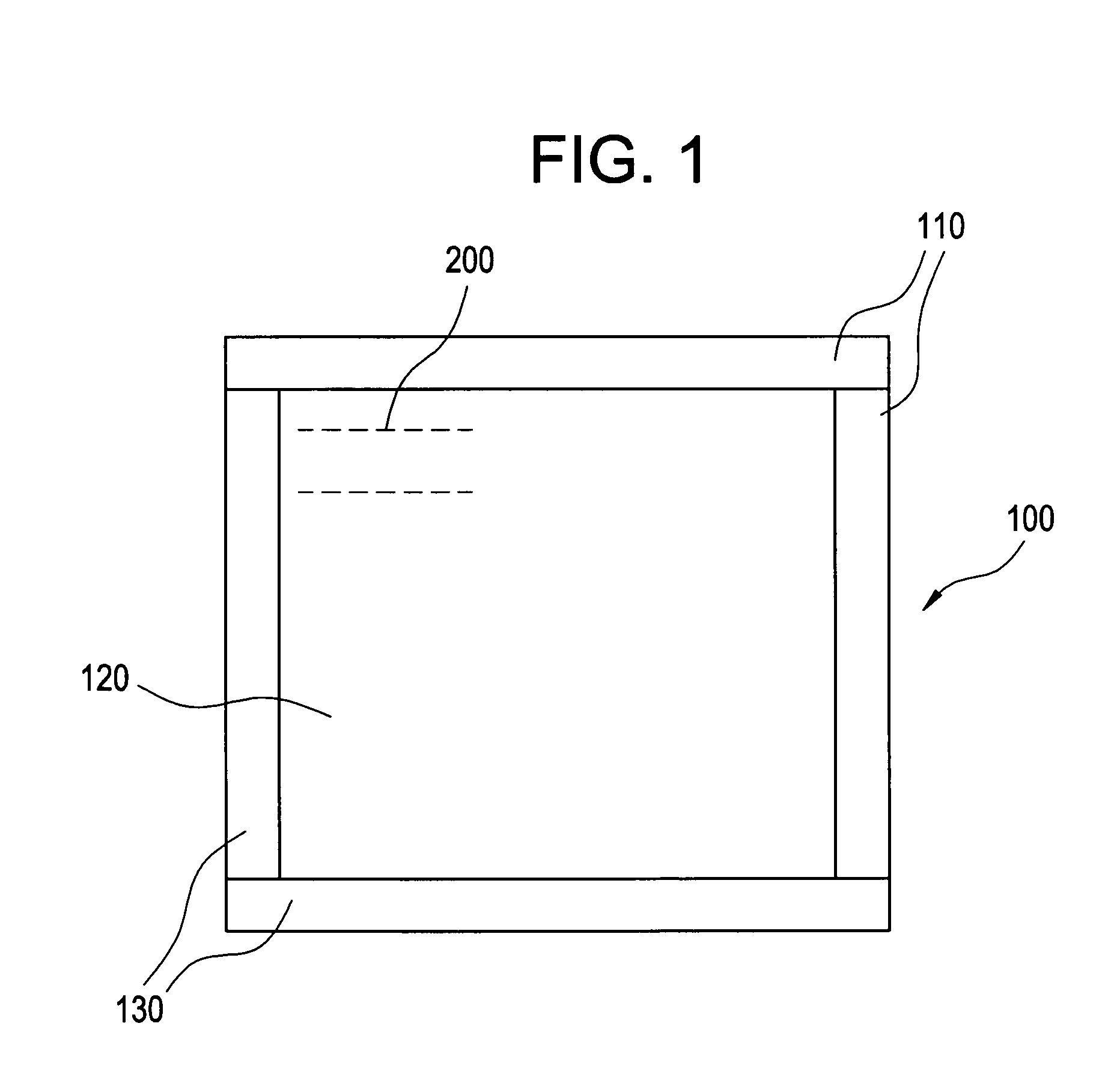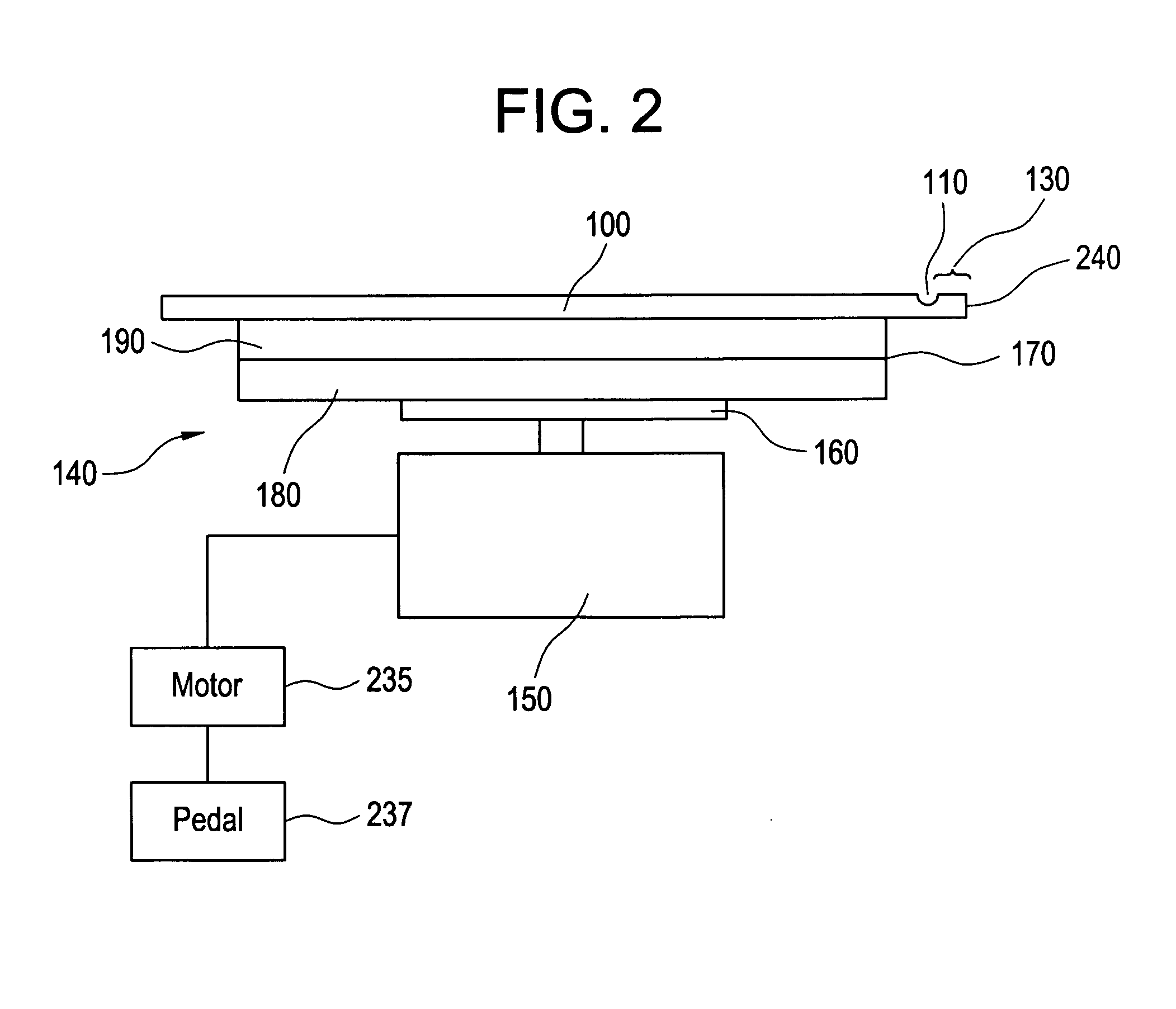Apparatus and method for glass separation for flat panel displays
a technology for flat panel displays and glass panels, applied in the direction of manufacturing tools, instruments, transportation and packaging, etc., can solve the problems of difficult control of the direction of separation cracks, more difficult to handle glass panels, and defects in the final glass panels, so as to minimize separation defects in glass panels, accurately position the panel, and more consistent separation
- Summary
- Abstract
- Description
- Claims
- Application Information
AI Technical Summary
Benefits of technology
Problems solved by technology
Method used
Image
Examples
Embodiment Construction
[0015]FIG. 1 illustrates a glass panel 100, such as a glass panel used in liquid crystal displays or X-ray imagers. Such glass panels 100 may range in size, such as from about 2 to 60 centimeters on a side, and may range in thickness, such as from about 0.5 to 2 millimeters in thickness. Typical panels are made from the Corning Corporation's Code 7059 or Code 1737 glass. The original glass panel 100 used in the manufacturing process is larger than the final product, and thus the unwanted edges must be separated to produce a final product with desired dimensions. As seen in FIG. 1, the glass panel 100 is cut along score lines 110, thereby defining an inner panel 120 of desired dimension and edge portions 130, which are to be removed. The glass panel 100 may be scored with a diamond or tungsten carbide tool, and may be scored at anytime prior to the separation process.
[0016]FIG. 2 illustrates a glass separating apparatus 140 for separating the unwanted edge portion 130 of the glass pa...
PUM
 Login to View More
Login to View More Abstract
Description
Claims
Application Information
 Login to View More
Login to View More - R&D
- Intellectual Property
- Life Sciences
- Materials
- Tech Scout
- Unparalleled Data Quality
- Higher Quality Content
- 60% Fewer Hallucinations
Browse by: Latest US Patents, China's latest patents, Technical Efficacy Thesaurus, Application Domain, Technology Topic, Popular Technical Reports.
© 2025 PatSnap. All rights reserved.Legal|Privacy policy|Modern Slavery Act Transparency Statement|Sitemap|About US| Contact US: help@patsnap.com



